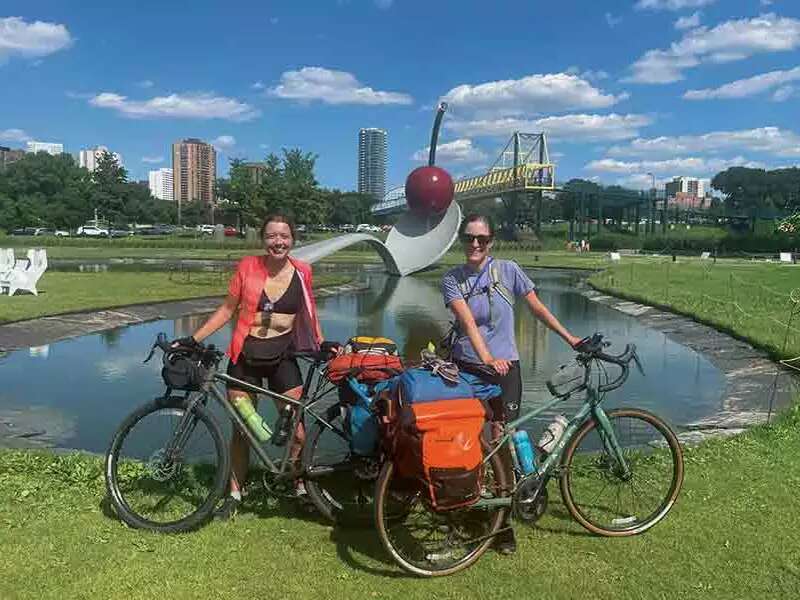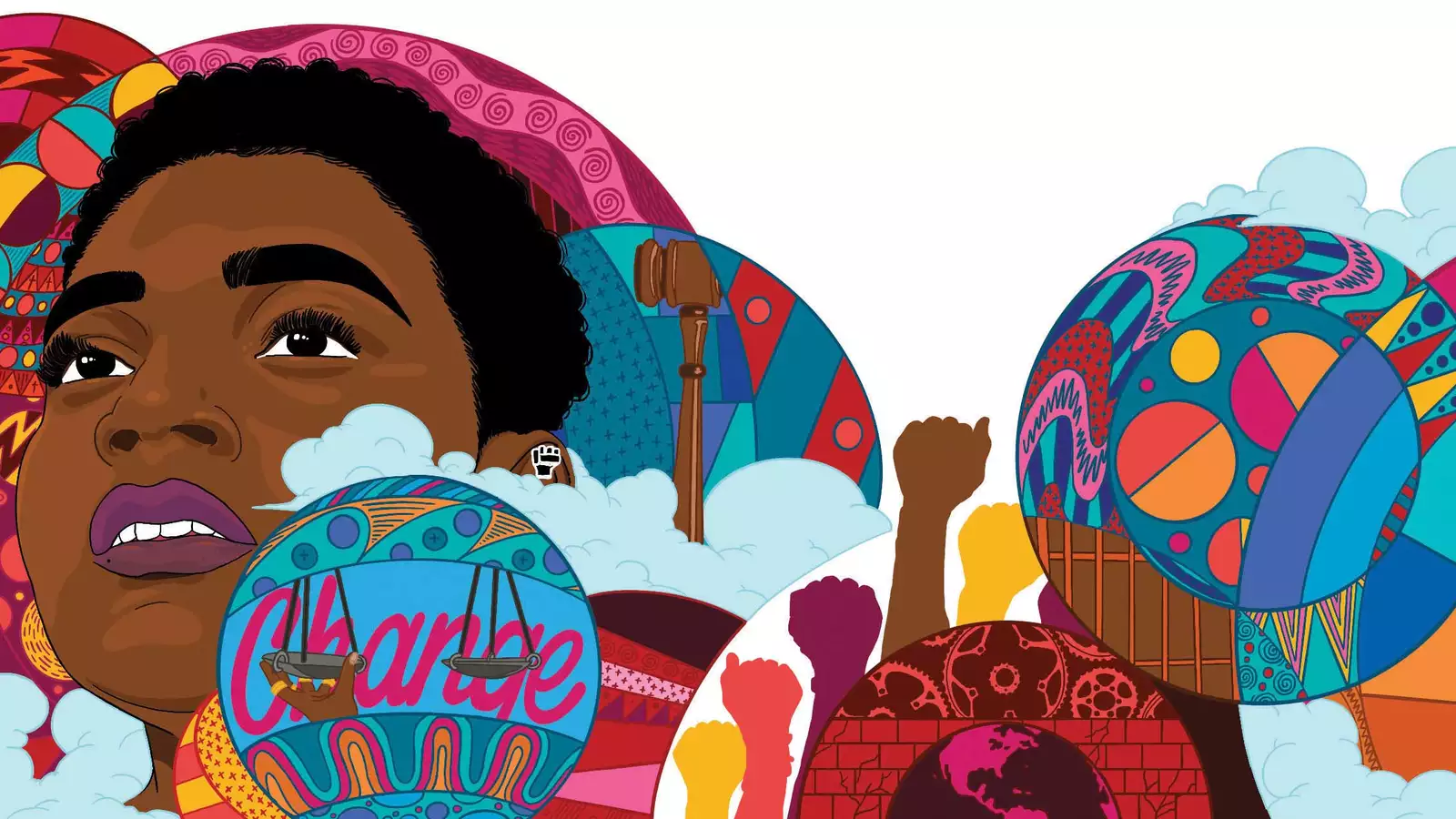
What one alum learned from biking cross-country with a former Barnard roommate

More than a year after the murder of George Floyd, one of the most common questions I am asked as the president of the Minneapolis NAACP is “How can I make a change?” I did not plan on holding a leadership position during nationwide racial justice protests originating just a few blocks from my home. I had to learn on the ground. In a short period of time, I came to understand police policy, the inner workings of city and state government, and how to organize during a crisis. But as people ask themselves — and me — what they can do to make a difference, I find myself thinking about and sharing my own activism journey more and more.
That journey starts in Minnesota, where I was born and have lived the majority of my life. It’s known as a progressive haven with great access to healthcare and an excellent education system. It is also a very white state. According to the 2020 census, Minnesota is 76% white, down from 85% in 2010, and 89% in 2000. Growing up as a Black girl in the Twin Cities, I benefited from my proximity to wealth and to whiteness and oftentimes didn’t see its gross systemic racial disparities on display. In my predominately white school, I remember being told, “Racism will die out when those old Southern racists die” and “Racism is over; we have a Black president.” For a time, this is what I believed, too. I didn’t quite see that it was racism and microaggressions that made me feel constantly isolated. I felt Minnesota just wasn’t for me; I believed there was so much more to the world. So I looked to New York City to truly find — and be — myself.
In New York, I learned to embrace my Blackness in ways I didn’t know I needed. I loved the experience of walking down 125th Street and seeing Black women with their hair in all different styles. I loved my conversations at Barnard in the Africana Studies Department and at BOSS. I wasn’t an activist, but I was involved in the flourishing Black community that Barnard fostered. After graduating in 2018, I moved back to Minnesota with the goal of fostering the same type of community I had at Barnard. I wanted to get “involved” now that I was back home, but I had no idea what that meant or how to best go about contributing. I decided to start by reaching out to organizations that I felt aligned with my values. I connected with elders and community members doing work I admired. And I started in on a type of research that required me to learn through doing and by building genuine relationships with people who’ve been impacted by systemic racism.
I quickly learned what my high school history classes left out. And I came to realize that the early identity of Minnesota was shaped through a war: The U.S.-Dakota War of 1862 led to the largest mass execution documented on our soil — 38 Native Americans were hanged in front of a 4,000-person crowd — and to the murder and displacement of thousands of Native Americans in the months that followed. I learned that the Ku Klux Klan and white supremacist activity flourished in both rural and urban areas of Minnesota in the 1920s. In 1907, an arsonist destroyed Brown’s Chapel African Methodist Episcopal in Hastings, the religious center for Blacks in the area, compelling many to leave the city. The last Black resident of Hastings died in 1954. I learned there were lynchings of Black men in Duluth in the 1920s, which the Minneapolis NAACP documented. And I learned how prosperous Black communities, like those in St. Paul’s Rondo community, were displaced and destroyed by the construction of the I-94 freeway. Learning Minnesota’s racist history — my home’s history — made me an activist because it compelled me to work to change its present and future.
With this knowledge, I also began to notice a pattern of police violence against Black Minnesotans. Since the late 1990s, more than 200 people have been killed at the hands of the police in Minnesota, and of those, many had Black ancestry, according to the Star Tribune. I learned their names: Jamar Clark, Philando Castile, Kobe Dimock-Heisler, Winston Smith, Dolal Idd, Travis Jordan, Jaffort Smith, Demetrius Hill, Cordale Handy, Isak Aden, George Floyd, Daunte Wright, among many others. The hardest part was learning these names through their loved ones, many of whom form the group Families Supporting Families Against Police Violence. Meeting these families and learning about my state’s legacy of violence against Black people made me reexamine Minnesota. It made me reexamine my own assumptions about the status quo of the state’s whiteness and the magnitude of its history. And it made me see how cultures, communities, and lives were lost due to white supremacist violence, as well as the often invisible violence that is necessary to maintain “business as usual.”
In November 2020, I was elected to lead the Minneapolis NAACP. But there are many forms of activism and community organizing. You can participate in direct services, self-help, education, advocacy, and direct actions. I am not an adept organizer of protests, campaigns, or events. But in my role, I get to help my community by advocating for policies that end police violence.
Our advocacy has meant putting in a lot of legwork toward incremental changes to police accountability. I’ve worked to create and pass a model policy on police response to First Amendment-protected public assemblies and testified for a bill that would ban peace officers from receiving or maintaining an officer license if they were a member of a group identified as a white supremacist terrorist organization by the FBI. We can push this work further by taking actions such as pressing for time requirements on the release of body camera footage and ending pretextual stops. But we must also work toward larger, more comprehensive policy work that transforms the criminal legal system and abolishes its white supremacist practices that have perpetuated violence and inhumane conditions.
If you would like to make a change in the world, now is the time to start, right where you are. In your community, company, city, or college campus, you have the power to make an impact.
***
Angela Rose Myers ’18 is the president of the Minneapolis NAACP and a master’s student of human rights at the University of Minnesota.